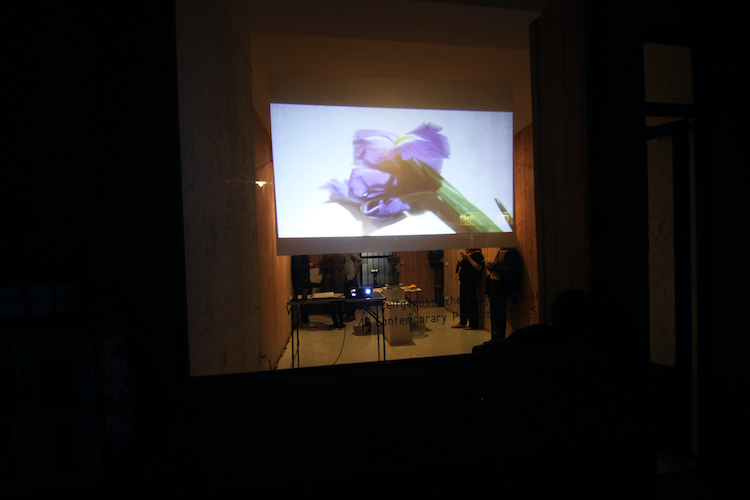

Almost immediately following our inaugural work Collected Smells, the Smell Lab collective began formulating a follow-up exploit. Encouraged by both the turn out and response at the prior one, made under the auspices of the Spektrum community presentations, it occurred to us that there was no cause to wait another year for the next round to do something public: we could plan our own exhibition, and extend our footprint outside of the Spektrum space as well. Chaveli Sifre, an olfactory artist who had previously used aroma both conceptually and materially, had a connection to the gallery Holz Kohlen Koks, and proposed that our next piece could take place there.
A bare-bones (or should I say ‘bare wood’?) yet beautiful gallery space in Neukölln, in the Reuterstraße, the single room was lined with raw wood panels and had a large front window allowing one to peek in. Set out with a long table, it made for a pleasant meeting space as well on the few evenings when we put the final logistical touches on the event.
Having experimented with distillation for Collected Smells, and those familiar with some techniques teaching the others, we had enjoyed the performative, ritualistic quality of the distillation process, particularly the steam distillation we had relied upon. And we had additionally, observed the increasing strenth of the distillate as the process went on the one hand, along with the ephemerality of some scents after completion on the other. The idea quite naturally occured to involve our audience in the process, and make steam distillation itself a performative act, extracting the scents of things brought to the event; while searching how best to make the work as compellingly interactive as possible, we hit upon the conceit of both combining these scents all together, and returning a portion of the extract to the contributors at different times, thus giving people a tangible (intangible) record of not only the whole community present, but their individual interaction with it, the proportion of volatile molecules stamped, as they would be, with the coded moment of their entry and exit.


To that end, we set up a compact distillery: Klara had a galvanized zinc steam distiller, for which we only needed a hot plate and some ice; everyone brought some other useful implements for breaking up the size of objects as needed; and a large glass vessel was procured from—I'm afraid I don't recall where. But it was quite impressive. On the evening, each arrival would be invited to deposit something in the distiller, something preferably aromatic that they associated with another person. The object would be recorded, photographed, and placed (at least a portion of it) in the apparatus. The donator would then be given a ticket1 with the time of their deposit, and a time when they could pick up a sample of the result. We gave the system a test run on the evening before, and we had some promising, if not pungent, results without a hitch. All that remained was to send out the invitations and await the visitors.

It was a warm, mid-June evening, and the trickle of attendees was more than happy to spill out of the tiny gallery, vending cold beers, onto the street. Once started up, the distiller rumbled and ejected gouts of steam, the wood-lined room suddenly evoking a sauna, as its spout began dripping cooled aromas into the vessel below. A first few people made their contributions: a handful of lavender, some violet pastilles, Earl Grey tea, a scrap of cloth, a sprig of ironwort. As the light darkened, images of the objects began appearing on the gallery window, which had been given a coating of thinned quark, of all things, rendering it partially opaque. When the depositors returned to claim their sample, a small glass vial was introduced into the dribbling stream, collecting a few unique drops of liquid. Not all of the objects were obvious choices for aroma: there was a human hair, string, a paperback, and a selection of foreign coins. One person, who had not seen the invitation, so wanted to participate that he removed the label from his shirt to put in.
Of the final results, I'm not sure I can say how it smelt—not terribly strong, there were recognisable notes from some of the components, but the piece was conceived first as a communally-participatory act, and only second to produce something aromatically significant, let along pleasant. As I recall, however, we were pleasantly surprised at the results, given some of the ingredients (e.g. garlic). I still have some extra vials of the distillate, I think. But I think the olfactory capture of the event was not much less ephemeral than our memories of it.